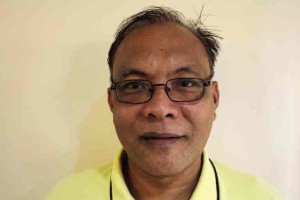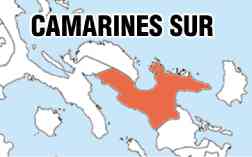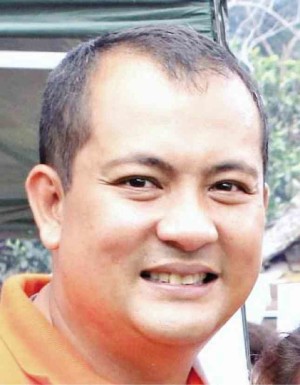Election 2016: Agenda of the Camarines Sur governor

LAKE BUHI in Buhi town, Camarines Sur, with the background of Mt. Malinao in the town of Tiwi, Albay. The 200-meter buffer zone provides more fishing ground for marginal fisherfolk and navigational areas. INQUIRER FILE PHOTO
The Inquirer is coming out today with the sixth of its series on pressing people’s concerns that should be high on the agenda of candidates for representative, governor or mayor in the May 9 elections. The series should help voters in the provinces choose their leaders wisely. In line with our “ThINQ. Vote.” advocacy, we have asked candidates in certain provinces, cities and congressional districts to outline their concrete plans of action in dealing with specific issues in their areas.
(Editors’ Note: INQUIRER.net has since substituted the abbreviated answers of the candidates, which were published in the paper, with the candidates’ full responses, as originally sent to the Philippine Daily Inquirer.)
Profile: Camarines Sur province
Camarines Sur is the biggest among the six provinces of the Bicol region in terms of population, comprising almost 30 percent of the region’s total land area.
Article continues after this advertisementWith 62 percent of its agricultural land devoted to crop production, Camarines Sur’s economy is largely agricultural and contributes half to the region’s cereal output. It has earned a name in the Philippine tourism industry through popular destinations like the white sand beaches of Caramoan and CamSur Watersports Complex, which popularized wakeboarding in the country. The deep religiosity of its residents is mirrored by century-old churches and the celebration of the feast of Our Lady of Peñafrancia in Naga City every September.
Article continues after this advertisementLocated about 400 kilometers south of Metro Manila, Camarines Sur borders the provinces of Camarines Norte and Quezon to the north, Albay province to the south, and the island-province of Catanduanes to the east.
Latest data from the National Statistical Coordination Board (NSCB, 2012) showed the annual per capita threshold in Camarines Sur at P18,717 and a 31.7-percent poverty incidence among families.
Provincial capital: Pili
Population: 1,822,371 (NSCB, 2010)
Registered voters: 1,001,870
Land area: 5,502 square kilometers
Population density: 333.2 persons per square kilometer
Income classification: First class (annual income of at least P450 million)
Political territory: 35 towns, 1 component city (Iriga), 1 independent component city (Naga) and 1,036 barangays
CONCERN 1: POLITICAL DYNASTY
The Constitution has an expressed provision against political dynasty even as its enforcement has yet to be supported by a law. Where do you stand on this issue? Are political dynasties good for the province?
Arnulf Bryan “Arnie” Fuentebella, United Nationalist Alliance:
The constitution mandates Congress to pass a law that prohibits political dynasty in elective positions. Our family’s position is to abide with what Congress will pass. My brother, Cong. Wimpy [Rep. Felix William Fuentebella], informed us that he is inclined to vote for a version of the anti dynasty bill that will ensure fairness in the elections. Sadly, Congress continuously fails to define political dynasty. Congress passed a new Sangguniang Kabataan (SK) law that incorporates [a provision on] political dynasty. Hence, there is hope that Congress will eventually agree and pass a law on the prohibition of political dynasty.
To reiterate, I will fully and faithfully adhere to what the law dictates and will follow whatever Congress passes.
Is it good for the province? It will depend on the public servants involved.
I benefitted from the good name that my predecessors left as public servants. Our family members come and go in politics, yet the institutions that they initiated and established remain. And these will remain to last as long as people benefit from them. That is the reason why we are elected and reelected. These are the leverage that sets us a notch higher than our contenders.
Institutions like the Partido State University, Philippine High School Bicol branch, Partido Development Administration and more than 40 public high schools established as national high schools, all done through republic acts, are so inspiring that these drive and inspire me to do more for the province.
I have always borne in mind what my father said about facing challenges, that is, my most formidable foe is myself. My mom likewise reminds me that the power given is fleeting and temporary. And the most noble thing is to wield this power to empower other people.
I am inspired by the achievements of my family and I am pushed to go the extra mile and do more. Moreover, our unity as a family is my main asset. It is the anchor that keeps me grounded and bolsters my character. The core values that we share define who I am. We love each other. We respect each other. Most importantly, we constantly remind each other of my grandfather’s motto: Service to people is service to God.

Miguel Luis “Migz” Villafuerte, Nacionalista Party
Miguel Luis “Migz” Villafuerte, Nacionalista Party:
First, Congress should enact immediately a law, which clearly defines what “political dynasty” means.
We, however, should take into consideration that banning or excluding competent individuals from running into public office, just because of his/her family name or their being related to incumbent officials, is not the solution in providing equal access to opportunities for public office.
I strongly believe that voters will choose an official based on platform and performance rather than based on personality and name recall if we institutionalize education of voters.
In addition, in the absence of a strong and established political party system, voters tend to lean towards known and established families’ long-term vision to ensure continuity and stability in their area. This is why I strongly believe that, to ensure equal access to opportunities for public office, the electoral and political party system should be overhauled as we try to address the issue on political dynasty.

Roger Buenaflor, Kilusang Bagong Lipunan
Roger Buenaflor, Kilusang Bagong Lipunan:
I am against the existence of political dynasty because it deprives other capable individuals to win in the elections and serve the public.
I am for the immediate implementation of the constitutional prohibition of political dynasty. It has not done the province any good because if you see the poverty situation in Camarines Sur, it had been the same all through the years with high number of families below poverty. For example, in the Partido Area, where I came from, no economic development had taken place.
Because of wealth and influence, a political dynasty deprives other citizens from serving the government in major elective position. Since as young as 23 years old, dynasts can field their sons or daughters to positions they vacate.
I am running against powerful families if only to show that anybody can challenge the political dynasty and be an option.
CONCERN 2: POVERTY ALLEVIATION
Camarines Sur’s poverty incidence has been going down, in a three-year period sample (2006, 2009, 2012), in which the poor comprised 39.5, 39.8 and 31.7 percent of the population, respectively. What are your specific programs and projects to improve family income and standard of living, and reduce poverty incidence in the province?
Fuentebella:
Aside from institutions established to address poverty, I constantly adhere to the HEEEWIIL doctrine of economists: Health. Education. Electrification. Environment. Water. Infrastructure. Investments. Livelihood.
For health, I established the Tigaon Municipal Infirmary to complement the Rural Health Unit in addressing the primary and curative care needed by my constituents. It likewise complements the inter-district health zone, a referral system established by the Partido Development Administration (headed by our congressman) to address the gaps in curative healthcare. It includes a referral system to the BMC, BRTTH and other national government hospitals. Our family also sponsors a surgical mission conducted every February, before the feast day of our Lady of Lourdes. Now on its 22nd year, we successfully mounted the surgical mission with the assistance of volunteer doctors. We have assisted an average of 200 patients each year covering major and minor operations and other health care services.
For education, the Partido State University and other educational institutions are complemented by our scholarship programs. We continue to expand the program which, as of today, is benefiting thousands of scholars in our municipality. It used to be zero before I came in.
I am extremely touched to see the spontaneous and voluntary testimonials of our scholars when they learned that I was running for governor. My campaign team shared it on Facebook and the Internet. I am pleased to see them have permanent jobs as accountants and engineers. Life-changing; inspiring. We partnered with Fr. Carmelo Caluag’s Magna Anima to conduct a seminar for teachers of the Partido State University, Philippine High School Bicol, and all principals and guidance counselors of the 74 national high schools in the district.
Our aim is to build caring communities in the schools of the district. It embraces the theme of first loving the students, and guiding them towards academic excellence. The formation of teachers was done after the catechists of healer priest Fr. Fernando Suarez conducted a recollection in all of our district’s public high schools. We also partnered with DepEd and DSWD to strengthen the adopt-a-scholar program of the teachers of DepEd. The passage of the UniFAST law (Unified Student Financial Assistance System for Tertiary Education Act), which was supported by Cong. Wimpy, will help a lot, especially so that we have more than 70 national high schools and the law will automatically benefit their top respective 10 for a total of over 700 scholars.
Electrification. There are two renewable energy power plants that will invest in our district this year. A 1.2-megawatt mini-hydro powerplant in Goa, Camarines Sur, and a 1.8-MW biomass powerplant in Tigaon. This project is facilitated by Cong. Wimpy and the Casureco 4 – another institution established by my grandfather with the help of his team when he was governor at that time. [At least] $5 million worth of investment and another $2 million for the biomass fuel will be infused to provide financial muscle into our local economy. These power plants will complement the recently completed looping distribution line going to the Caramoan Peninsula and the 69-kilovolt line from Lagonoy to Presentacion to efficiently deliver quality supply of electricity. This endeavor will not only benefit the farmers and the consumers but also the future generations to come.
Water, investment, environment. Our Partido Water Supply System (PWSS) provides clean and potable water to 100 (pls check the figures) barangays in our district. It uses European technology, funded by DANIDA. The $15 million investment was coursed through the Partido Development Administration – an institution established by my father through a republic act. The project generated thousands of jobs for our people.
I also provided irrigation projects worth hundreds of millions of pesos from the Department of Agrarian Reform and the National Irrigation Administration. This is complemented by our town’s 200-ton capacity palay and corn drying facility. This greatly boosted agricultural productivity ensuring increased income for our farmers and food security for my area. To protect our water source, the Partido Development Administration collaborated with the DENR and the DSWD to plant Pili and other high-value fruit-bearing trees in our watersheds covering a total of 50 hectares of land in our district. This is the initiative we took as a flood prevention and mitigation measure.
Infrastructure. This year, the concreting of the 270-kilometer national road will be completed by the DPWH. I complemented it with the construction of farm-to-market roads in my area. Massive building of classrooms have been identified and monitored with the DepEd, Partido State University and Philippine Science High School. Moreover, the roads and pathways used by the students to go to their schools are currently being inventoried for project identification. As a next step, we made representations with the DOTC to partner on a local government initiated-transportation plan that will facilitate access to the towns of Caramoan, Garchitorena, Presentacion (covered by the 92 km newly concreted national highway) and Siruma (covered by the 39 km soon-to-be completed national highway). The plan will complement the tourism plan submitted to the RDC to further spur tourism development in other areas in Partido.
After the installation of various cell sites in strategic areas in the district, we are poised to pursue the delivery of improved internet services.
With the DOST-ICTO as our active partner, the provision of free Internet services through traditional means and through the use of the TV white space technology is being explored. The development of the Internet superhighway is designed to utilize existing right of ways by the roads, water pipes and electricity lines. All these will be covered by a provincial physical framework plan that harmonizes the comprehensive land use plans and the national physical framework plan of the country.
Our district, in partnership with HUDCC and NHA, has two big housing projects in the coastal towns of Sagñay and Presentacion at P75 million each. Another housing project, in partnership with HDMF (Pagibig Fund), was made available to interested municipal employees of Tigaon and the Partido Development Administration. Our aim is to showcase the proper development of new sustainable communities near the workplace of the beneficiaries.
We strongly believe that the key to a sustainable community is livelihood. Job-matching skills training are regularly being conducted with TESDA and PSU. The DepEd will be an additional partner with the implementation of the K to 12 program.
In place is also our Bangkabuhayan program where we partnered with the DOLE. About a hundred barangays of the district not accessible by roads received boats for their livelihood. The additional task of cleaning their bodies of water was included in the signed MOA with the barangays as an adjunct to our initiatives toward sustainable development.
It also aims to complement our culture for promoting tourism.
Tourism development. Partido District is gearing up for the big change in its economic landscape with the near completion of its road network infrastructure. The 92-km road from Lagonoy to Presentacion, Garchitorena and Caramoan can now be traversed by car by road trippers on a summer getaway to the beaches of Caramoan. This augurs well for our tourism industry. We are committed to tourism development that creates positive experience for local people, local businesses and tourists themselves. It should involve broadening the ownership base such that more people benefit from it, and that includes the host communities as well. An important goal of tourism planning is to integrate all tourism development into the social and economic life of a community with programs focused on improving the quality of life for local residents without compromising the future well-being of the people or the environment.
Villafuerte:
Increasing family income has been the overall focus in Camarines Sur for more than a decade. Despite increase in population and migration from other provinces, we have constantly reduced poverty, and steadily improved our Human Development Index (HDI) score.
Our strategy has been to focus poverty alleviation programs where the poorest of the poor are located. Normally, these are the coastal and upland barangays where little or no employment opportunities for generating income are available.
As governor, we have provided food-for-work and cash-for-work in constructing pathwalks, roads, footbridges, shelter, coastal clean ups, and greening activities (tree-planting, mangrove-planting) in these vulnerable areas. While we provide work so they can have income opportunities, we had simultaneously attended to the basic needs of the communities such as water supply, health and sanitation, and education.
Agriculture is a key component in our poverty alleviation program. Majority of our people rely on agriculture as a source of income. Our main thrust is the mechanization and modernization of agriculture.
- Our goal has been to increase farmers’ income by lowering labor costs and inputs, through the use of tractors, rice harvester, rice transplanters etc.
- Increase crop yields through better rice and corn varieties, post-harvest facilities and water for irrigation.
- Diversify to high-value crops.
- We are considering storm water harvesting to store run-off/floodwater for irrigation.
- We are planning to introduce the production and use of “biochar”- a method of turning agricultural waste, such as rice hulls, and coconut husks, into fertilizer. Biochar improves yield and it is also a proven greenhouse gas reduction method. We also aim to preserve the fertility of our soils.
These are just a few of the ways we promote environmental stewardship–we have broken two Guinness World record in mangrove planting and tree planting, for example.
For education, we are building five community colleges, particularly in the far-flung and coastal municipalities of Siruma, Garchitorena, Caramoan and Tinambac–areas where there is little or no access to college education, which is now being implemented. I believe that the higher the level of education of the population, the lesser the number of people living in poverty. We provided college scholarships to over 20,000 students as poverty alleviation program.
We will provide free Internet access to all public elementary and high schools in the 35 towns and 1 city in the province. We are pushing for digital education and this will be piloted in five towns Milaor, Minalabac, Pili and Bula next month. We will start distributing tablets this school year and launch digital education in public schools. We also plan to construct climate smart public schools utilizing solar energy.
For tourism, we are able to put Camarines Sur on the Global Tourism Map because of CWC (Camsur Watersports Complex) and our development and promotion of the Caramoan Islands, where the international reality TV show Survivor continues to be shot on location for the past 10 consecutive years. Tourism has provided jobs, livelihood and income for our people. Because of tourism, we are now on the list of Top 10 provinces in terms of income and growth from being one of the poorest provinces in the country. We will continue to develop and promote more tourist destinations and activities to sustain growth in jobs and opportunities through tourism.
Our El Verde Program, which aims to plant 40 million trees by 2020, is an effective and successful poverty alleviation program of the provincial government of Camsur. We are able to provide regular jobs and income in far flung barangays along the coast, mountains and rivers. Thousands of El Verde workers plant various type of trees (hardwood, fruit-bearing, etc.), mangroves, nipa (palms), bamboo, malunggay (moringa), maintain and care for them in exchange for food or cash.
Buenaflor:
In addressing poverty in Camarines Sur, I envision to implement programs in education and skills training to improve the livelihood of poor families. I will also give priority to agricultural development, especially diversified organic farming, and give technical and production assistance to farming families.
CONCERN 3: AIRPORT DEVELOPMENT
If the P3.53-billion Naga Airport Reorientation Project pushes through in San Jose, Pili, Camarines Sur in 2017, it will destroy 133 hectares of irrigated land. More so, another 200 ha of rice lands downstream of the irrigation systems will be cut off from water supply. How do you consider long-term effect of the airport development on the livelihood of 1,716 families and on food production?
Fuentebella:
[Representatives Noli and Wimpy Fuentebella] proposed an alternative site in San Jose, Camarines Sur. This is due to a vision that the Philippine National Railway will improve the railway services by providing a bullet train that covers a three- hour train ride from Naga City to Manila.
Apparently, it will impact on the agricultural productivity of the province. Agriculture and food security will be a major concern for the country, especially due to the rapid industrial development of Calabarzon. In weighing these concerns, the expansion of the Pili airport may be beneficial to travelers in the short term but not in the long run. Hence, our legislators made a counter proposal.
Villafuerte:
The upgrading and development of the Naga Airport is long overdue.
Actually, Camarines Sur became the top tourist destination in the country despite having an old airport with a short runway. Imagine the growth of tourism, business and investments that will flow with the expansion and upgrading of the Naga Airport.
Regarding the issue on the affected farmers and irrigation, we will make sure that the affected farmers will be properly compensated and their livelihood attended to. The national government, through the DOTC, DA, and NIA, has committed to replace irrigated land and plantable area that will be affected by the Airport project. In fact, thousands of hectares will be developed this year and the next that will expand irrigated lands in our province.
What should be highlighted is the fact that, thousands of families will benefit from the economic boom the airport project will bring. Thousands of job, livelihood and business opportunities and millions of pesos in investments will pour into our province because of the better accessibility the airport will result to.
Another issue that has to be considered is the security and safety of thousands of passengers flying in and out of Naga Airport monthly. The short runway and orientation of the Naga Airport currently is not ideal and safe that is why, we will ensure that the implementation of the airport project will be fasttracked.
Buenaflor:
I am against the rehabilitation of the Naga Airport if it will destroy hundreds of hectares of lands devoted to rice production. It will affect the province’s food production and it will have a long-term effect on the livelihood of the farmers.
(Interviews by Juan Escandor Jr.)

